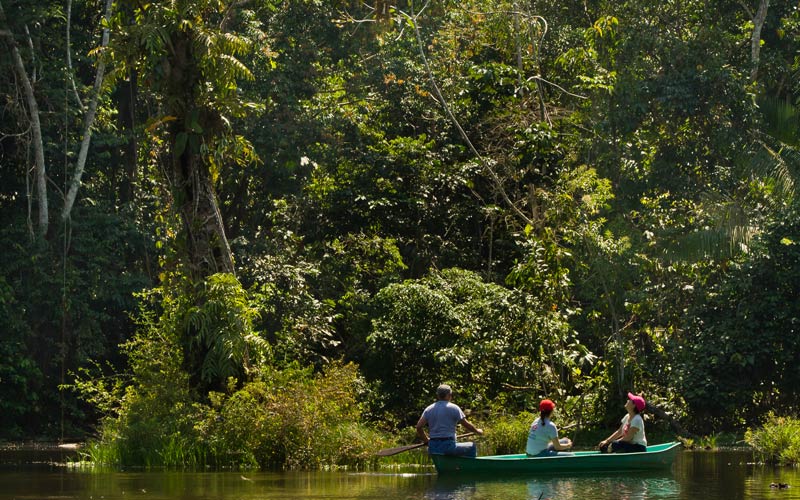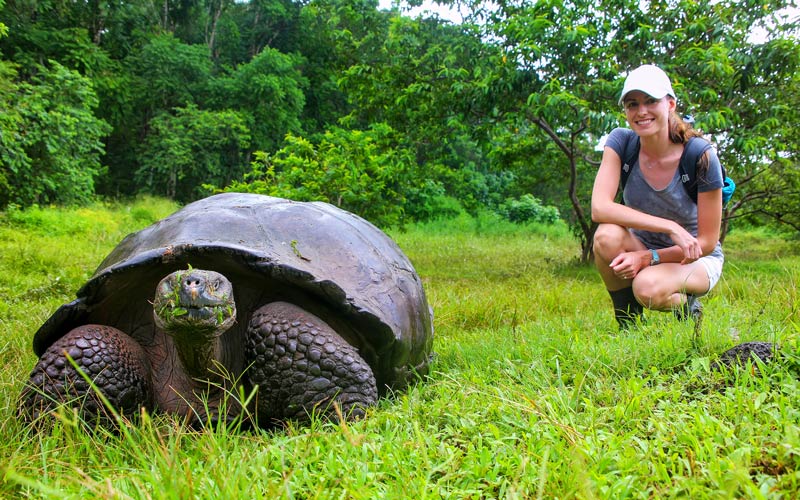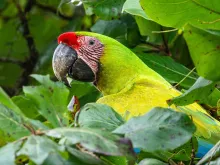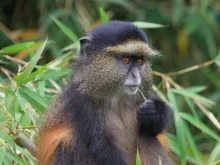In the ever-evolving fight against threats like climate change, pollution, and habitat loss, advances in science offer exciting new tools for protecting our planet’s flora and fauna. Here, we shine a spotlight on five innovative approaches from researchers and organizations that are using technology as a tool for conservation.
 Photos by Debbie Jordan
Photos by Debbie Jordan
Tracking Bird Migration with Motus
The use of automated radio telemetry by the Motus Wildlife Tracking System helps track the migration of many bird species, bats, and insects with high temporal and geographic precision as they travel over long distances. This great example of a Motus Station located on the imposing canopy tower at the Lapa Verde Refuge Reserve in Sarapiquí, Costa Rica, thanks to a gracious donation from the Dallas Zoo, showcases how placing this highly technological antenna on a prime spot to observe and record the migration of diverse wildlife, especially birds of prey, across the Americas, allows a collaborative network of international researchers, educators, organizations, and citizens to contribute to important ecology and conservation research for migratory animals through a centralized database and management system.

Drones in the Amazon
Rainforest Expeditions' Amazon Aerobotany project aims to apply the power of drone technology to the costly and labor-intensive task of monitoring the rainforest canopy. This is one of a series of projects in the Wired Amazon Program, an initiative designed to merge scientific research and conservation with the immersive experience of ecotourism in Peru's Tambopata National Reserve and Bahuaja-Sonene National Park. For this project, drones soaring above the lush canopy are equipped with imaging tools that capture high-resolution imagery of the rainforest foliage. With the help of citizen science volunteers, the images are analyzed to generate useful data about the forest's health and diversity for ecological monitoring and conservation efforts. This project supports economically significant species like the Brazil nut and supports sustainable harvests that generate millions in revenue and provide thousands of local jobs.

“Burr on Fur” Polar Bear Study
Polar Bears International, working with scientists at 3M (the global science and manufacturing company behind Post-it Notes) and a multi-institutional research team, recently completed trials on new trackers that can be adhered directly to a polar bear’s fur. Compared to current tracking methods like ear tags and GPS collars, the small devices are intended to be less invasive while still providing quality data. The “Burr on Fur” study was conducted on polar bears along the coast of Hudson Bay, Canada. After exploring adhesive, mechanical, and hybrid techniques, the scientists narrowed down their efforts to three prototypes designed to withstand below-freezing temperatures, salt water, and other challenges posed by the bears’ remote Arctic habitat. As they now carry out further testing and refinement, researchers hope the end result will provide a clearer understanding of the animals’ movements and populations. If successful, the technology could even be applied to other species in the future.
 Photo by Laurie McLaughlin
Photo by Laurie McLaughlin
GPS & Camera Traps for Gorillas
Collecting information about gorilla group movements is critical to learning more about them and continuing to advance conservation efforts to protect them, so the Dian Fossey Gorilla Fund uses GPS devices and remote camera traps to gather digital gorilla ranging data in Rwanda and the Democratic Republic of the Congo without tagging the primates in any way. Inspired by Dian Fossey’s originally hand-drawn maps, the Fossey Fund has been using satellite technology since 1999 to build databases that not only keep track of the movements, habitat, and behaviors of two of the four gorilla subspecies — the critically endangered Grauer’s gorilla and the endangered wild mountain gorilla — but also help develop effective conservation strategies by sharing their cutting-edge, award-winning research with the Rwandan government, local partners, and scientists from around the world.

Satellite Trackers on Galápagos Giant Tortoises
Satellite animal trackers are revolutionizing conservation efforts in the Galápagos Islands. By equipping giant tortoises with these advanced tracking devices, researchers from the Galápagos Conservancy can gather crucial data on migration patterns, behavior, and habitat use. This technology allows for more precise monitoring and protection of these endangered species, ensuring that conservation strategies are both effective and adaptive to the animals' needs all while minimizing researcher's physical presence in sensitive habitats.















